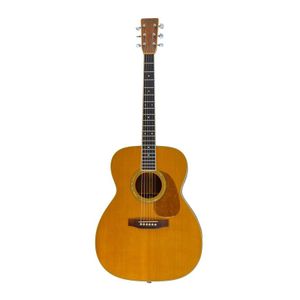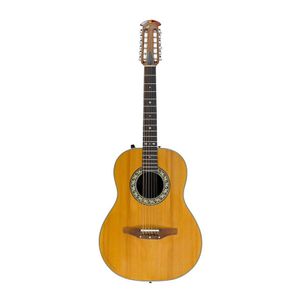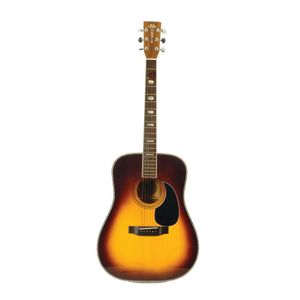Morris W-50 Acoustic Guitar with Hard Case
You must be a subscriber, and be logged in to view price and dealer details.
Subscribe Now to view actual auction price for this item
When you subscribe, you have the option of setting the currency in which to display prices to $Au, $US, $NZ or Stg.
- Rosewood - A dense timber that varies in shade to very light brown to almost black. When rosewood is cut and sanded the colour of the timber will turn black, and after polishing and exposure to daylight, the surface will gradually lighten over time to light brown with black streaks.
The name comes from the odour emanating from the timber when it is planed, sanded or cut.
Rosewood was very popular for use in Victorian furniture in the second half of the 19th century, and at that time most of the rosewood was imported from Brazil. However it also grows in India and Indonesia.
It is used in the sold for chairs and table legs, but for carcase furniture such as side cabinets and bookcases, and for table tops it is always used as a veneer. - Mahogany - Mahogany is a dense, close grained red-coloured timber from the West Indies and Central America. It was first imported into Europe in the the early 18th century and its use continued through the 19th century. It was popular for furniture making because of its strength, the wide boards available, the distinctive grain on some boards, termed flame mahogany and the rich warm colour of the timber when it was polished.. The "flame" was produced where a limb grew out from the trunk of the tree, and this timber was usually sliced into veneers for feature panels on doors, backs and cornices.
Some terms used to describe mahogany relate to the country from which it originally came, such as "Cuban" mahogany, "Honduras" mahogany etc. However unless the wood has been tested the names assigned are more a selling feature, rather than a true indication of the timber's origin. - Satinwood - Satinwood is a dense pale gold coloured timber that was imported into Britain in the second half of the 18th century, and early 19th centuries from the East Indies and the West Indies. The name derives from the satin-like surface sheen when the timber is polished.
It was used in the solid, as a veneer and in inlays. As well as furniture, satinwood was used for making musical instruments, barometers, boxes and clocks.
It will usually be found on only the very best quality objects, presumably because of of its cost at the time.
This item has been included into following indexes:
Visually similar items

A Martin M-38 acoustic guitar, 1979, American made, serial number 419710, uncommon 0000-14 fret sizing, natural gloss finish, solid spruce top, solid Indian rosewood back and sides, ebony fretboard, mahogany neck, rosewood bridge, tortoiseshell pickguard,

A Maton EBG808C small body acoustic/electric guitar, Australian made, serial number 2181 (1003), natural satin finish, selected Queensland maple neck, 6 mm pearl dot inlays, 'AA Select' solid Sitka spruce top, select Queensland maple back and sides, scallo

A Morris acoustic guitar, F-10 model, with spruce top, nyatoh neck, rosewood body and finger-board, c.1974. With hard case.

An Ovation 1615 twelve-string acoustic/electric guitar, American made, serial number 168532, natural gloss finish, solid spruce top, five-ply bound, parabolic 'Lycrachord' bowl back, ebony fingerboard with ornamental diamond inlays, walnut bridge, Piezoele
